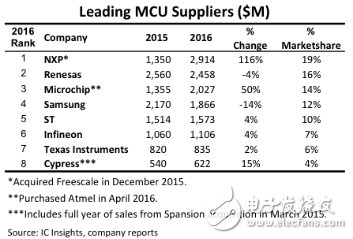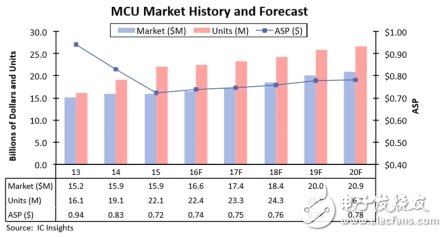ELEXCON Shenzhen International Electronics Show and the 6th Embedded Systems Exhibition have an embedded system zone, and the 9th MCU Technology Innovation and Embedded Application Conference will be held concurrently to showcase and discuss the development trend of MCU market and technology. Welcome everyone to pay attention to it. .
Microprocessors and single-chip microcomputers (MCUs) began to emerge in Europe and the United States in the 1970s. In 1981, the 8051 single-chip microcomputer was introduced, and it has been 36 years since today. In terms of quantity, 8-bit MCU is still the main force of the MCU market. There are still many companies based on the 8051 core design and production. In the early 1990s, due to price reasons, 32-bit MCUs were only used in applications that required high performance computing. After 2008, new technologies such as the Internet of Things (IoT) emerged, allowing developers to start looking for MCUs that have wireless communication capabilities, have some computing power, and are not too expensive. As the MCU of the ARM CortexM core gradually dominates the market and applications are becoming more and more, and more advanced and efficient process technology is adopted in chip manufacturing, the price of the 32-bit MCU and the 8-bit MCU are not essentially Differences, some even cheaper, coupled with the good ecological environment created by ARM, 32-bit MCU has become the core of today's global consumer and industrial electronics. I review the development history of global MCU and explore the development trend from the following three aspects.
MCU market statusSince 2015, in order to compete for market share and deploy strong IoT applications, several large-scale mergers and acquisitions have taken place among major MCU vendors. According to market research firm IC Insights, from the acquisition of the combined sales data, NXP, Microchip and Cypress 2016 MCU product line sales increased significantly year-on-year, and the ranking also increased accordingly. MCU vendors that did not make large-scale acquisitions were flat, with only single-digit growth, such as ST and TI, and some experienced significant declines, such as Samsung (see Figure 1).

Figure 12016 Global MCU market landscape
From Figure 1, we also see that the global market share of the eight major MCU vendors has reached 88%, which means that in addition to several major MCUs, the market share of small MCU companies is very small. IC Insights' August 2016 study said that the MCU market will reach its peak in 2020, with sales reaching $20.9 billion and selling 26.7 billion chips (see Figure 2). In response to this market situation, at the just-concluded 2017 STM32 summit, ST set itself the goal of 2020 sales will reach 4 billion US dollars, from the current market 10% share to 20% share.

Figure 2 2013-2020 global MCU market forecast
SHAOXING COLORBEE PLASTIC CO.,LTD , https://www.colorbeephoto.com